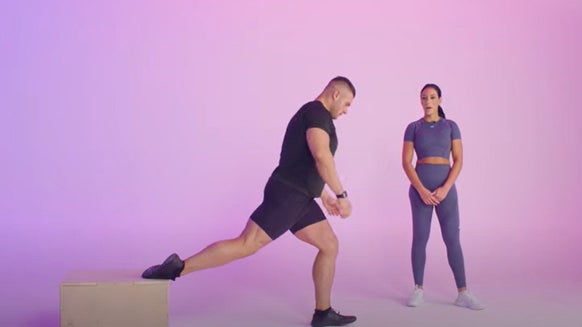Transverse Abdominis | Exercises To Strengthen Your Core and Abs

The transverse abdominis (TVA) is a large muscle that lies under the main abdominal muscles (rectus abdominis) — the ones you see when you’re lean and toned. Its main function is to assist in spinal control and breathing.
Connecting to the pelvis, ribs, and anterior lumbar spine, it creates a corset-like effect, which helps to control your core and support your spine. The transverse abdominis lies beneath your obliques and, as the name suggests, the fibres run across the body, from left to right and vice versa.
As the TVA is attached to the ribs and forms part of the core and abdominals, it assists in forced exhalation. This is a great way to train the TVA, as we're going to look at.
Which exercises train the transverse abdominis?
The challenge with strengthening your transverse abdominis is that it can be difficult to know when you’re actually activating this muscle. As the TVA doesn’t contribute to spinal flexion, like the other abdominal muscles, you'll need to train this slightly differently.
However, the potential benefits on day-to-day life, posture, and lifting ability make this well worth the effort. We advise focusing on two main methods of training the TVA — vacuum training and bracing your core.
Vacuum training
No, you won’t need your henry hoover for this one. This exercise is fantastic for training activation of your TVA
1. Start by finding space in the gym, similar to where you’d do your abs or stretching.
2. Position yourself so you are on all fours, with your palms directly under your shoulders, you head looking at the floor, and your knees directly below your hips.
3. Start by exhaling all air from your lungs. As you do so, bring your belly button up and in, towards your spine.
4. Once your belly button is in as far as it will go, hold that position for 10 seconds.
5. Then take a nice deep breath in and relax your stomach.
6. Repeat for 10 reps, for 3 sets.
As the TVA muscle attaches to the spine, it can help strengthen your lower back and reduce pain and risk of injury.
Vacuum training can be incorporated into your current ab workout. Up to 3 times per week is a good start. You can then add more reps and sets to make this more challenging.
You should then consider progressing to sitting on a chair and repeating the above progression scheme again. Once you can do that, try doing vacuum training whilst standing up. Just hold on to a high counter or wall and repeat the aforementioned steps.
Bracing your core
Now, this may sound silly, but many people who squat, deadlift, overhead press and bench press, don’t brace their core properly. Many will breathe into their chest, thinning their midsection, and creating a weak point they need strength.
Try this technique: Push your finger into your belly and take a deep breath. As you breathe, try to push out your stomach. You will notice that a “tightness” occurs on the inside at the peak of your breath. As this happens, maintain your deep breath but tighten your abs.
This has now created “intra‐abdominal pressure”, and this is what helps support the spine, by activating your abs, obliques, spinal erectors and TVA. If you struggle to feel your abs bracing, try tucking your pelvis forward. This will flatten your lower back into a more neutral position and will activate your core and abdominal muscles more.
Performing this style of bracing whilst in the plank and side plank position is the best way to practice, as these static, isometric style exercises best transfer over to large, compound movements such as the squat, deadlift, bench press and barbell overhead press.
Doing crunches and Russian twists will build your abs, whilst vacuums and bracing will strengthen your core.
Take home message
The TVA is a large muscle in the core that stabilises the lumbar spine and helps control forced exhalation. It creates a corset around the organs and mid-section, providing rigidity and intra-abdominal pressure to support the spine during heavy, compound lifts.
It can be trained through vacuum training and proper abdominal bracing and is best trained 2‐3 times per week, as with any other muscle. Adding TVA training into your routine will not only have profound benefits on your strength but will also help to protect you from injury.






